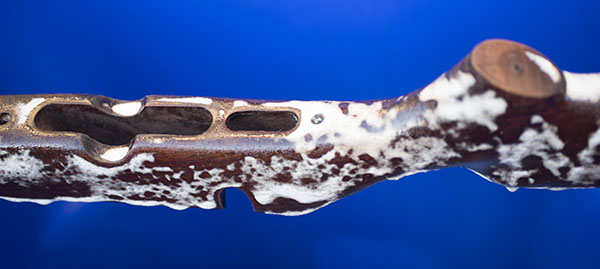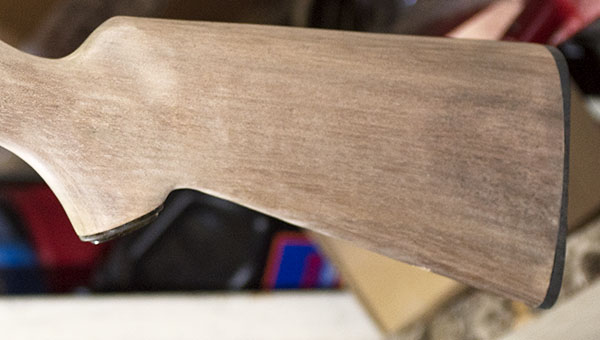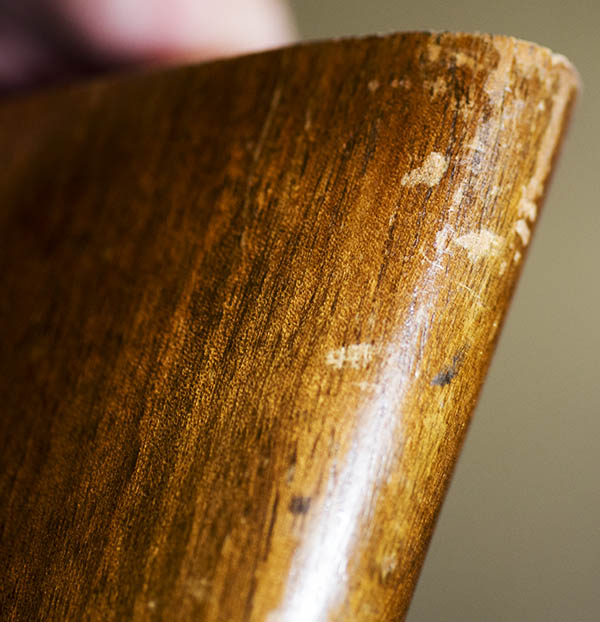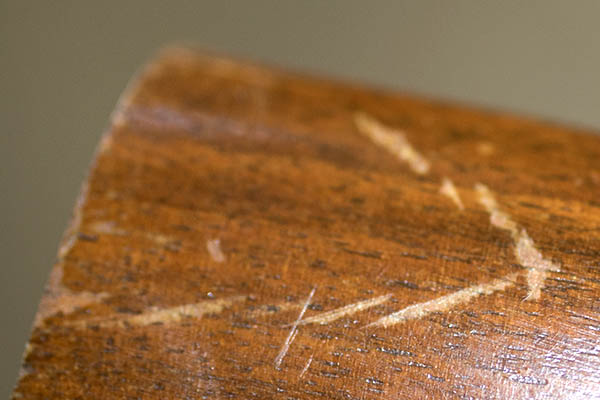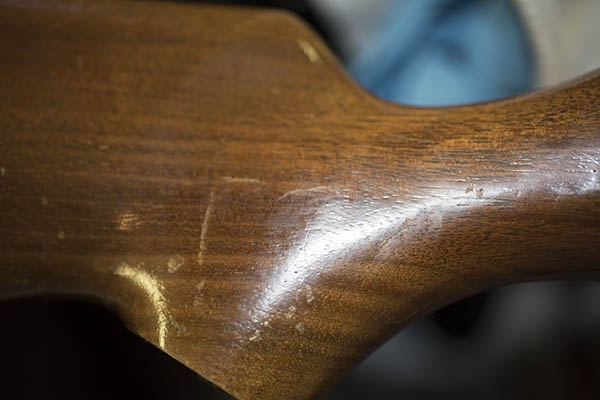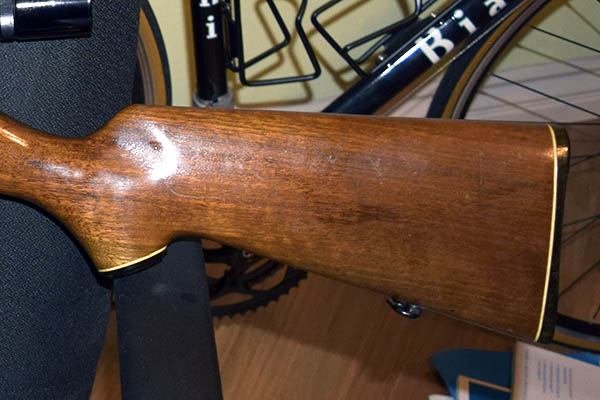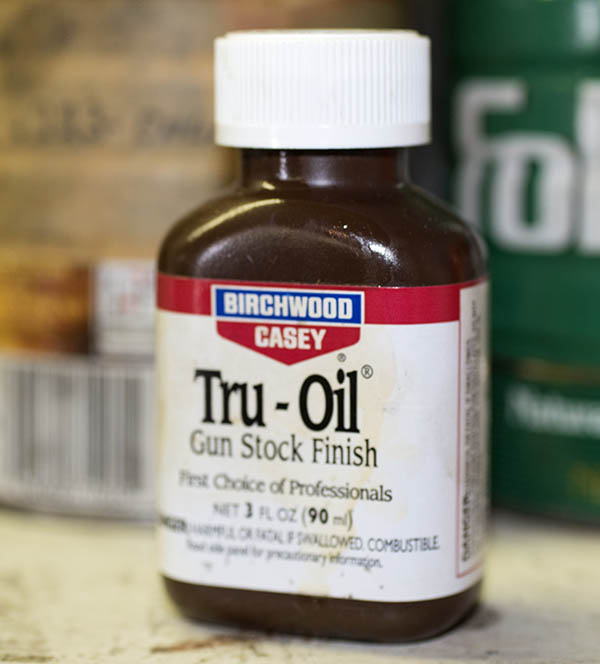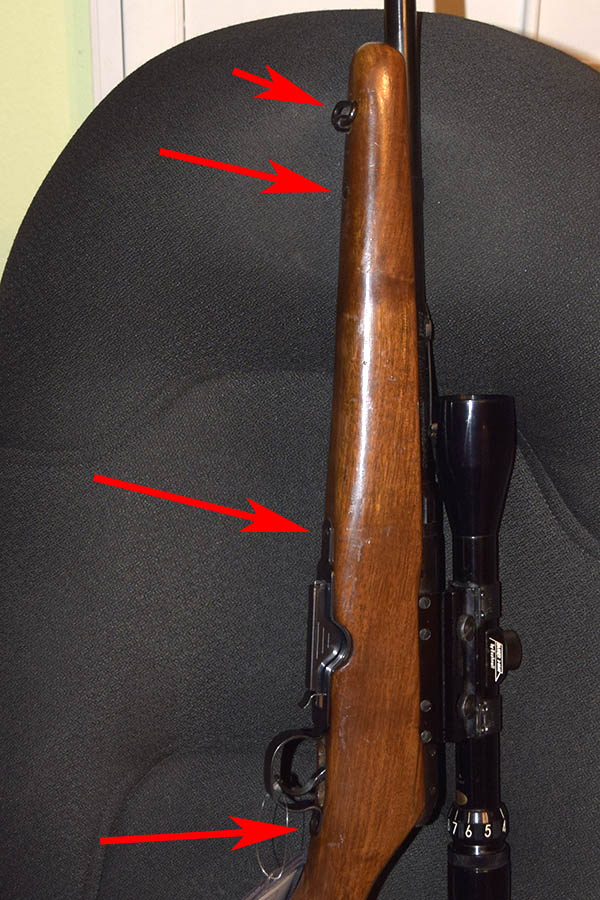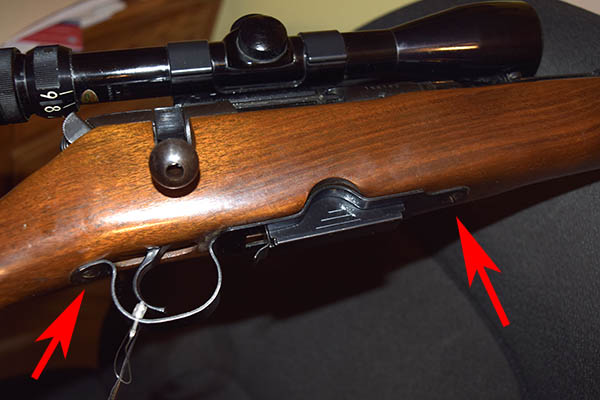In our previous blogs, we removed the Savage 340 barreled action from the stock, we stripped the old finish and made a few minor wood repairs, and we sanded the stock to a smooth finish with successively finer sandpaper. We’re now ready to get to the fun part, and that’s applying the TruOil for a rich, deep, and elegant finish.
TruOil Application
 Applying the TruOil
Applying the TruOil to the stock takes several days because it involves repeated applications and drying cycles. There are basically two ways to go here. We can create a deep gloss finish, or we can create a subdued satin finish. I like both, and as of this writing, I haven’t decided what the final look is going to be.
You’ll recall that I omitted the white line spacers between the stock and the buttplate and between the pistol grip cap and the buttplate because I like the look better without the spacers.
I always c-clamp a rod to my bench because that’s where I’ll hang the stock after each TruOil coat to allow it to dry. You can see that in the photo to the right.
The way I like to do this is I cut out a small square of old T-shirt for the TruOil applicator. I’ll put a small bit of TruOil
on the cloth and rub that into the stock, and then hang the stock to allow it to dry.
On this particular piece of walnut, I noticed that the walnut pores were large in a few areas, so I put on two coats over the space of a couple of days to see how they filled. I didn’t like the way the pores looked (they were not filling) after the second coat. That’s okay; we have an app for that. It involves applying a thick coat of TruOil and giving it several days to cure. That worked for me because I was going to be out of town for several days (another secret mission, you could say), and that would give the third coat plenty of time to thoroughly cure.
Some folks like to use a wood filler to fill the pores. I’m not one of them. I like to let the TruOil do all the work. I think it looks better than using a filler.
After the third, thick TruOil coat cured, I then went to work on the stock with 0000 steel wool. The idea here is remove all of the excess TruOil
from that third, thick coat, and get a uniform surface with no open pores. That worked out well, and I had a nice subdued stock finish that already looked way better than the original finish. I could have stopped at that point and reassembled the rifle, but I decided to go for a deeper finish. More TruOil
coming up, folks.
 I applied a thin fourth coat of TruOil
I applied a thin fourth coat of TruOil and allowed it to cure overnight. The stock started to look very good, and I next applied a fifth thin coat. It’s what’s curing now, and it’s what you see in these photos. The drill is to go very, very light with each coat, rubbing it into the walnut with the cloth applicator. You want to get the wood wet, but just barely. If you get it too wet, the TruOil
will run (and then you have to rub it down with steel wool after it cures and start all over). I’m going to do this a few more times, and I’ll decide on the total number of TruOil
applications based on how the stock looks after I apply each coat. As I mentioned above, I may leave the high gloss finish as is, or I may opt to break the shine with 0000 steel wool and have a subdued satin finish. We’ll see.
Read more of our Tales of the Gun stories here, and don’t forget to sign up for our automatic email blog notifications!
Did you miss the earlier blogs on this Savagely inexpensive, tack-driving Savage 340? You can see them here, here, and here.

